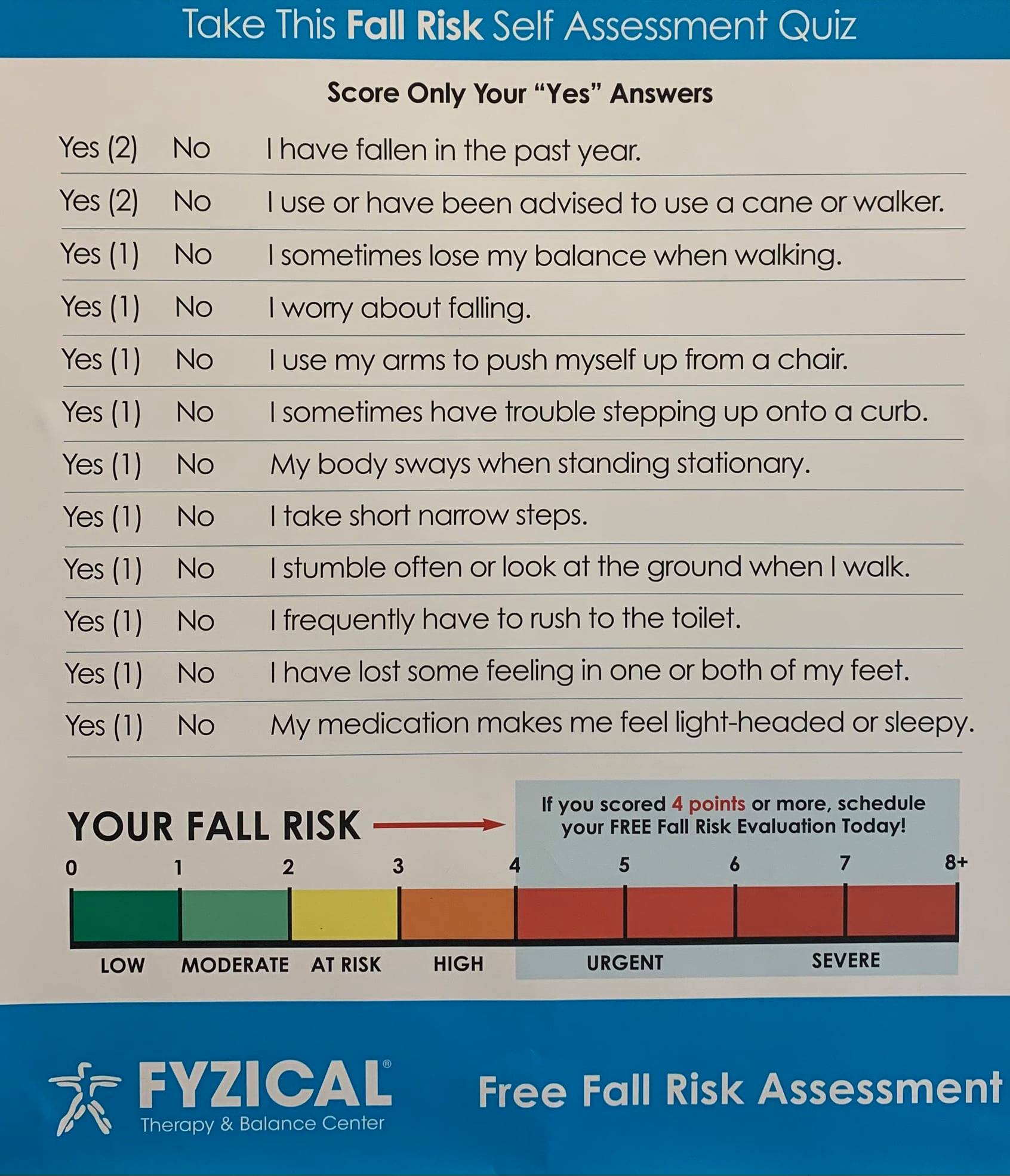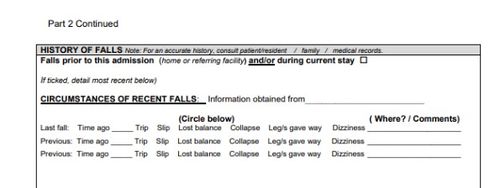The Greatest Guide To Dementia Fall Risk
Table of ContentsThe Main Principles Of Dementia Fall Risk Excitement About Dementia Fall RiskHow Dementia Fall Risk can Save You Time, Stress, and Money.The Only Guide for Dementia Fall Risk
A fall threat analysis checks to see just how likely it is that you will drop. It is mostly done for older adults. The evaluation generally includes: This consists of a series of concerns concerning your total health and if you've had previous drops or troubles with balance, standing, and/or walking. These tools evaluate your stamina, equilibrium, and stride (the way you stroll).Treatments are referrals that may reduce your threat of dropping. STEADI consists of three actions: you for your risk of dropping for your danger factors that can be enhanced to try to prevent drops (for instance, equilibrium issues, impaired vision) to minimize your risk of dropping by making use of reliable techniques (for example, offering education and sources), you may be asked several concerns including: Have you dropped in the past year? Are you fretted about falling?
Then you'll sit down once more. Your service provider will certainly check how lengthy it takes you to do this. If it takes you 12 seconds or even more, it might indicate you are at higher danger for a fall. This test checks stamina and balance. You'll being in a chair with your arms crossed over your chest.
The positions will obtain more difficult as you go. Stand with your feet side-by-side. Relocate one foot midway forward, so the instep is touching the huge toe of your various other foot. Relocate one foot fully in front of the other, so the toes are touching the heel of your other foot.
Get This Report about Dementia Fall Risk
A lot of falls occur as a result of numerous adding aspects; as a result, handling the risk of dropping starts with determining the elements that add to drop danger - Dementia Fall Risk. A few of the most relevant risk elements include: Background of previous fallsChronic clinical conditionsAcute illnessImpaired gait and equilibrium, lower extremity weaknessCognitive impairmentChanges in visionCertain high-risk drugs and polypharmacyEnvironmental variables can additionally enhance the threat for falls, consisting of: Insufficient lightingUneven or harmed flooringWet or unsafe floorsMissing or harmed handrails and order barsDamaged or incorrectly fitted tools, such as beds, wheelchairs, or walkersImproper use of assistive devicesInadequate guidance of the people living in the NF, consisting of those that display aggressive behaviorsA effective fall threat administration program requires a thorough professional evaluation, with input from all participants of the interdisciplinary team

The treatment plan need to likewise include interventions that are system-based, such as those that advertise a risk-free environment (suitable lights, handrails, order bars, etc). The effectiveness of the interventions need to be evaluated occasionally, and the care plan revised as needed to mirror changes in the loss risk evaluation. Carrying out a fall danger monitoring system making use of evidence-based finest technique can reduce the prevalence of drops in the NF, while restricting the potential for fall-related injuries.
The smart Trick of Dementia Fall Risk That Nobody is Talking About
The AGS/BGS guideline recommends screening all grownups aged 65 years and older for fall risk yearly. This testing is composed of asking individuals whether they have dropped 2 or more times in the past year or sought medical attention for a fall, or, if they have not dropped, whether they really feel unstable when strolling.
People who have dropped as soon as without injury ought to have their equilibrium and stride evaluated; those with stride or balance irregularities should receive extra evaluation. A background of 1 fall without injury and without stride or equilibrium troubles does not necessitate more analysis beyond continued yearly loss threat screening. Dementia Fall Risk. An autumn risk assessment is called for as part of the Welcome to Medicare evaluation

Dementia Fall Risk for Dummies
Recording a falls background is one of the high quality indicators for autumn prevention and management. A critical part of threat assessment is a medication testimonial. Several classes of drugs increase autumn threat (Table 2). copyright medicines particularly are independent predictors of falls. These drugs tend to be sedating, alter the sensorium, and hinder equilibrium and stride.
Postural hypotension can usually be reduced by decreasing the dose of blood pressurelowering drugs and/or quiting medications that have orthostatic hypotension as an adverse effects. Use above-the-knee support hose pipe and resting with the pop over to these guys head of the bed raised may likewise lower postural decreases in blood pressure. The preferred elements of a fall-focused checkup are shown in Box 1.

A pull time greater than or equal to 12 secs suggests high loss danger. The 30-Second Chair Stand test evaluates lower extremity toughness and equilibrium. Being incapable to stand from a chair of knee height without using one's arms shows increased loss danger. The 4-Stage Balance test assesses fixed balance by having the patient stand in 4 positions, each considerably a lot more challenging.